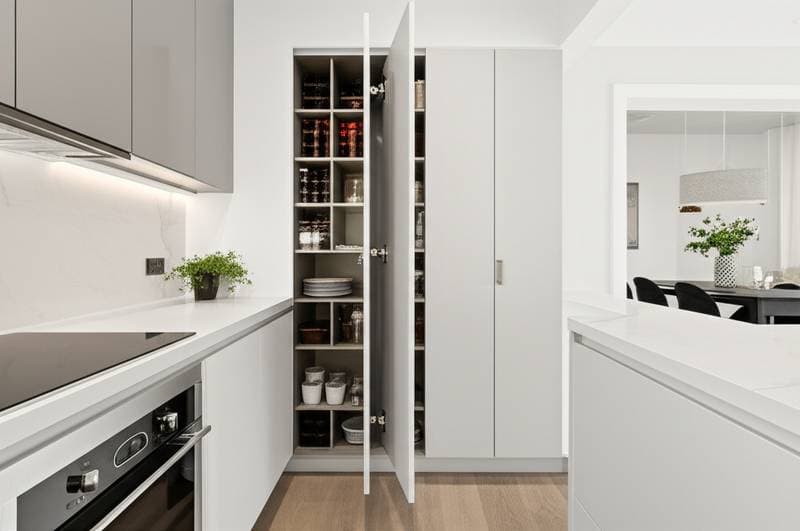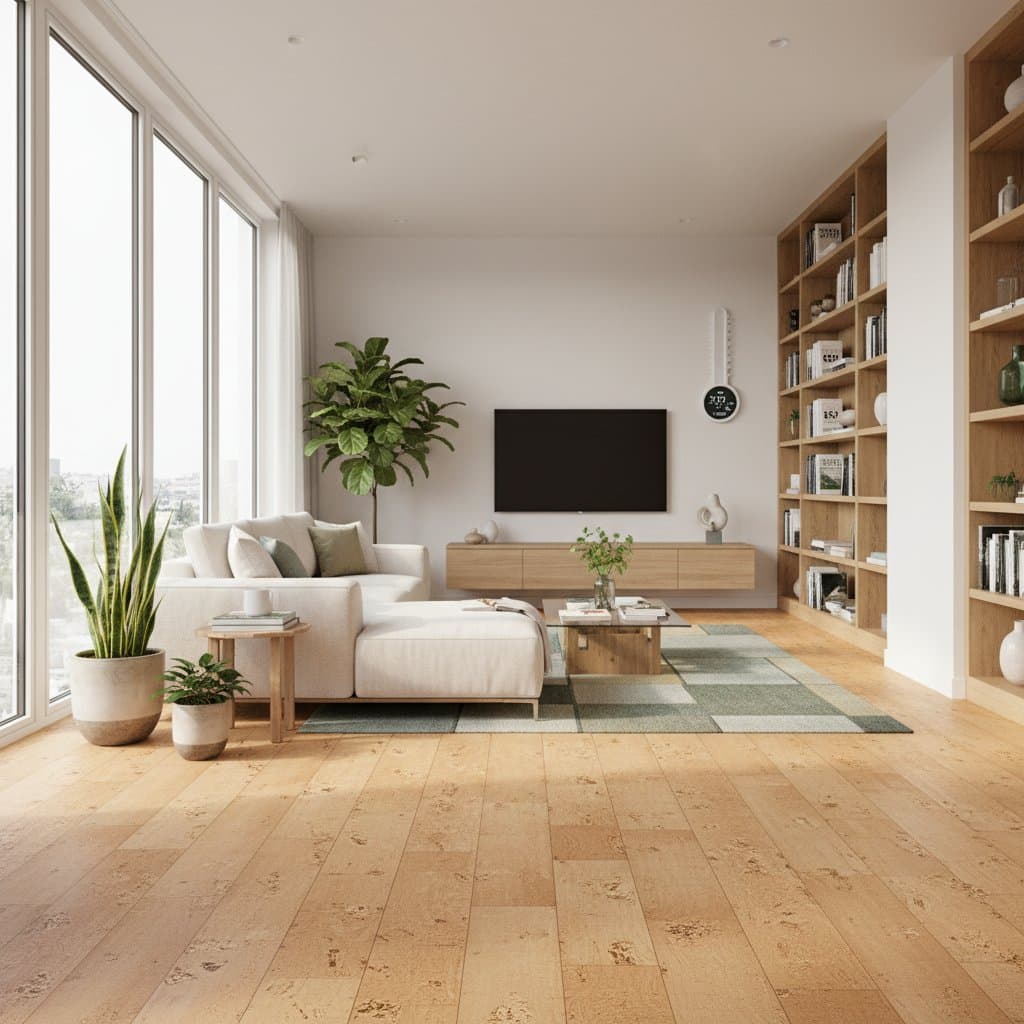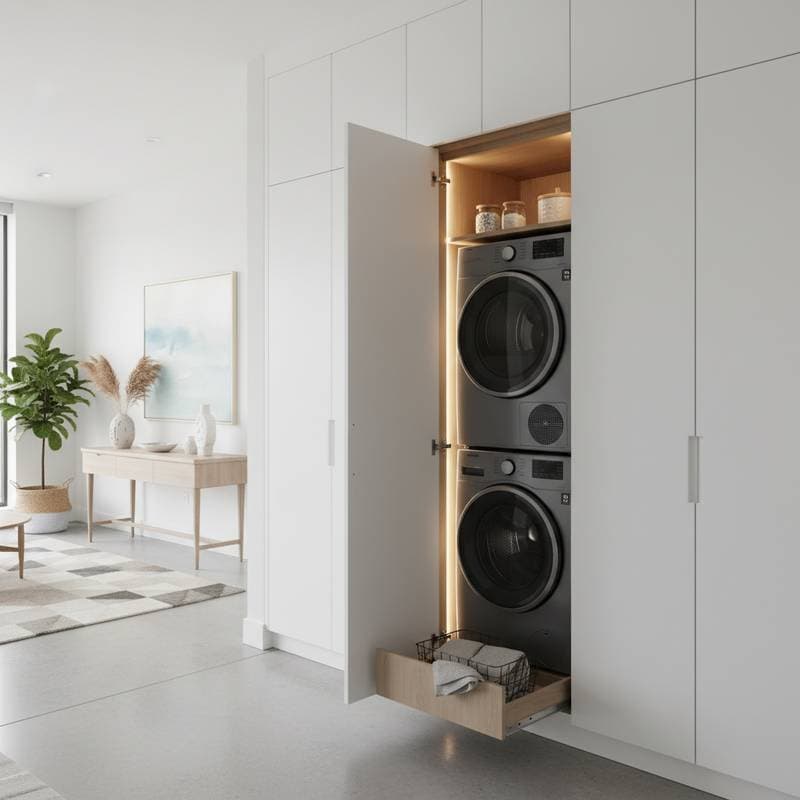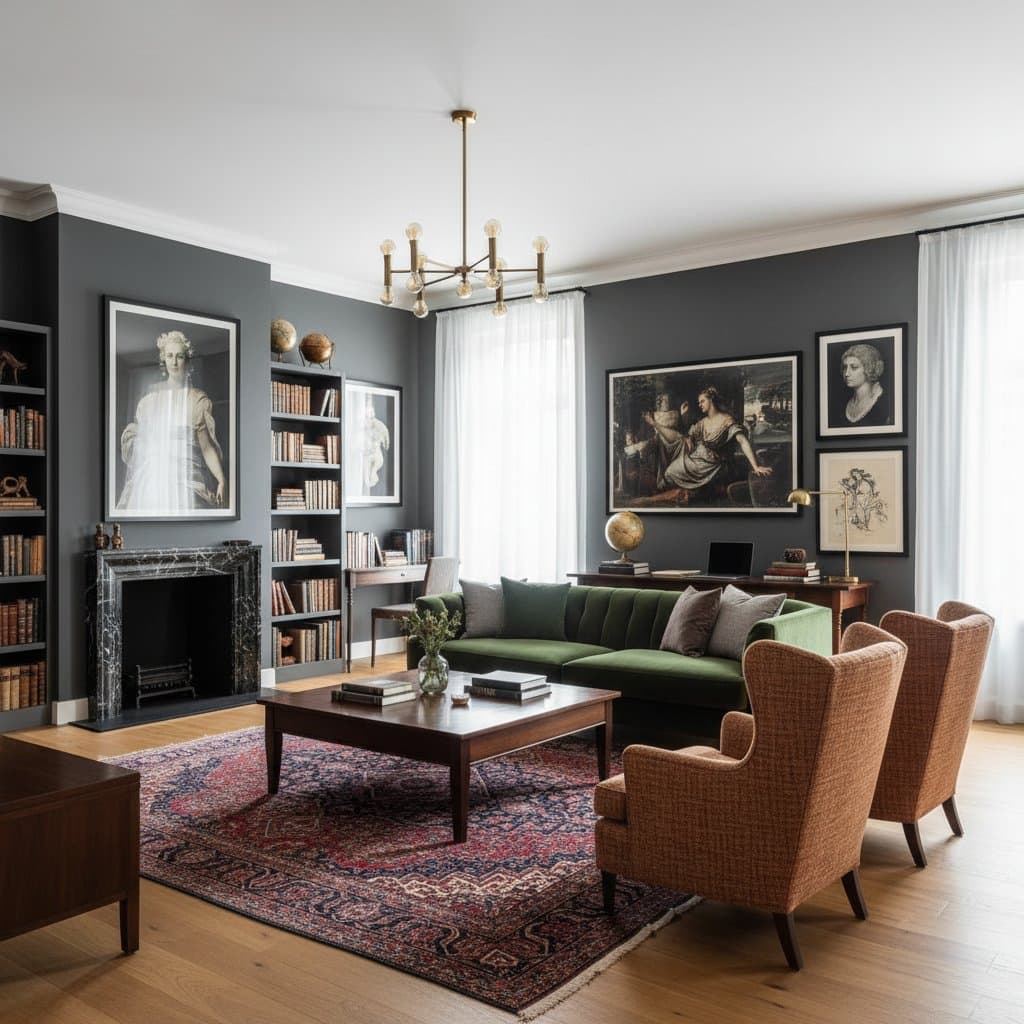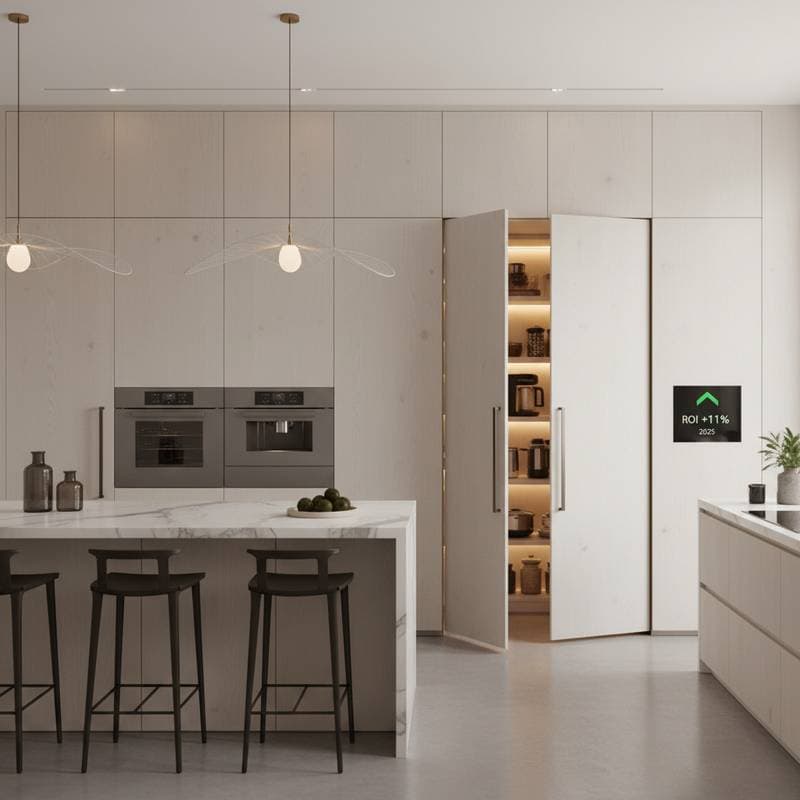Hidden Pantries: The 2025 Key to Enhancing Home Value by 6 Percent
A hidden pantry increases home value by as much as 6 percent while eliminating visual clutter, simplifying meal preparation, and introducing an element of intrigue. The benefits extend to aesthetics and utility, making kitchens more appealing and efficient.
Once reserved for high-end properties, hidden pantries now serve as a practical upgrade for kitchens of all sizes. They enhance property worth, expand storage capacity, and refine design elements.
Reasons Hidden Pantries Drive Property Appreciation
Prospective buyers prioritize ample storage, yet they value sleek, uninterrupted lines above all. Hidden pantries provide both advantages. Real estate professionals note that properties featuring discreet storage solutions sell more quickly and command higher prices. The typical value increase reaches approximately 6 percent, influenced by the quality of materials and the pantry's dimensions.
This appreciation stems from three primary factors:
- Aesthetic Serenity. Everyday items vanish behind unobtrusive panels, creating a sense of order.
- Practical Utility. Spaces accommodate small appliances, pantry staples, and household cleaners without exposure.
- Premium Ambiance. Discreet storage imparts a bespoke quality to standard kitchens.
Properties with open-concept designs gain the greatest advantage, as limited wall space demands innovative solutions. A hidden pantry maintains harmony in sightlines while introducing essential organization.
Investment Breakdown
| Task | Typical Cost Range | Influencing Factors |
|---|---|---|
| Installation of Hidden Cabinet Door | $800 - $2,000 | Dimensions, hinge mechanisms, surface treatments |
| Construction of Compact Hidden Pantry (Cabinet Depth) | $1,500 - $3,000 | Bespoke cabinetry versus prefabricated components |
| Development of Full Walk-In Hidden Pantry | $3,000 - $9,000 | Structural framing, wall finishing, wiring, and shelving systems |
| Integration of Lighting and Electrical Elements | $150 - $600 | Type of fixtures and accessibility to existing circuits |
| Application of Trim and Final Touches | $200 - $800 | Painting, sealing compounds, and specialized accents |
Costs fluctuate based on geographic location. Premium options such as custom woodworking, embedded illumination, or high-grade hardware elevate expenses. Savings arise from selecting ready-made cabinets and basic coating applications.
Essential Tools and Materials
- Precision tape measure and spirit level
- Electronic stud detector
- Power drill and screwdriver assortment
- Circular or table saw for precise cuts
- Secure cabinet fasteners and wall anchors
- Invisible hinges or magnetic latches
- Decorative trim, primer, and sealant
- Energy-efficient LED strips with motion activation (optional)
- Adjustable shelving planks and support brackets
This selection supports projects ranging from small to moderate scale. Professional assistance becomes necessary for tasks involving new electrical circuits or modifications to load-bearing elements.
Considerations for Regional Compliance and Building Codes
In areas prone to high humidity or proximity to water, select durable options such as medium-density fiberboard coated in laminate or treated hardwoods. Regions with cold temperatures require insulation on exterior walls adjacent to pantries to mitigate moisture buildup.
Incorporating power outlets, illumination, or ventilation systems into a hidden pantry often necessitates permits and inspections under local regulations. Verify requirements prior to any construction or electrical modifications.
For properties in historic districts, structural alterations to walls face limitations. Opt for freestanding cabinet assemblies mounted on surfaces rather than invasive installations.
Hidden Pantries Versus Butler's Pantries: A Comparison
| Aspect | Hidden Pantry | Butler's Pantry |
|---|---|---|
| Concealment Level | Completely integrated | Partially visible or dedicated space |
| Scale | Compact to moderate | Substantial to expansive |
| Primary Function | Clutter reduction and storage | Food preparation, serving, and inventory management |
| Expense Spectrum | $1,500 - $9,000 | $3,000 - $15,000 |
| Impact on Resale Value | Approximately 6 percent | Up to 8 percent with superior detailing |
Hidden pantries emphasize invisibility and integration. Butler's pantries prioritize hospitality and workflow. Certain designs merge the two, employing a disguised entrance to access a secondary preparation zone.
Ideal Timing for Installation
Incorporate a hidden pantry during comprehensive kitchen renovations or cabinet replacements for optimal results. Retrofitting into established walls proves feasible yet constrained by underlying architecture and utility placements, such as pipes or ducts.
Homeowners preparing for sale find that a concealed pantry distinguishes their property in competitive markets. Savvy buyers associate innovative storage with superior functionality, often leading to stronger bids.
In compact residences, a slim-profile hidden pantry repurposes underutilized areas like linen closets or utility nooks. This approach delivers organizational benefits without compromising square footage.
Ensuring Safety and Long-Term Reliability
Avoid compromising structural integrity by consulting experts before penetrating load-bearing walls. Employ fire-resistant drywall in pantries adjacent to mechanical rooms.
Maintain electrical installations in accordance with standards, positioning wires distant from combustible materials. Reinforce shelving supports to handle dense loads, such as stacked canned goods.
Select enclosed-space-rated lighting fixtures to prevent hazards. Standard home warranties typically omit coverage for amateur electrical modifications; engage certified contractors for integrations with primary systems.
Expert Recommendations for Flawless Execution
Align toe-kicks and moldings continuously to mask door edges effectively. Opt for painted or invisible hinges to achieve uniformity.
Orient wood grain consistently across panels to eliminate detectable joints. Incorporate soft-closure mechanisms to preserve alignment over time.
Install subtle ventilation, such as a low-profile fan, to circulate air and avoid odors. Fine-tune the disguise by evaluating door operation in various lighting conditions prior to completing finishes; eliminate any shadows or inconsistencies.
Frequently Asked Questions
What is the average return on investment for a hidden pantry?
Homes equipped with hidden pantries typically see a 6 percent uplift in appraised value, with variations based on execution quality and local market dynamics.
Can I install a hidden pantry as a DIY project?
Basic installations using existing cabinetry suit skilled homeowners, but complex builds involving wiring or framing demand professional involvement to ensure safety and compliance.
How does a hidden pantry differ from standard cabinet storage?
Unlike visible cabinets, hidden pantries conceal entire storage zones behind matching walls or doors, promoting a minimalist aesthetic while maximizing capacity.
Are there space-saving options for small kitchens?
Yes, shallow pull-out units or swing-out panels fit into tight areas, providing substantial storage without altering room dimensions.
Maximizing Your Kitchen's Potential
Integrating a hidden pantry transforms ordinary kitchens into streamlined havens that appeal to both daily users and future buyers. By addressing storage needs discreetly, this upgrade not only elevates functionality but also positions your home favorably in the evolving real estate landscape. Consider consulting a design specialist to tailor the feature to your specific layout and budget.

